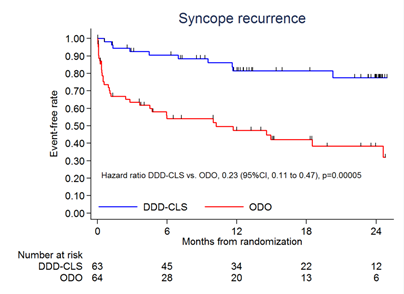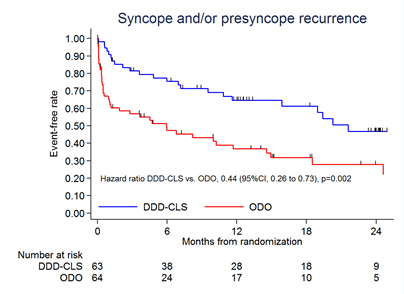Key Results
Key Result 1
CLS significantly reduced the syncope recurrence rate by 77% versus placebo

Figure 1: Survival free of syncope recurrence for CLS-paced patients versus placebo
Cardiac Pacing in Severe Recurrent Reflex Syncope and Tilt-Induced Asystole
Brignole M, Russo V, Arabia F, Oliveira M, Pedrote A, Aerts A, Rapacciuolo A, Boveda S, Deharo JC, Maglia G, Nigro G, Giacopelli D, Gargaro A, Tomaino M; BioSync CLS trial Investigators. Cardiac pacing in severe recurrent reflex syncope and tilt-induced asystole. Eur Heart J. 2021 Feb 1;42(5):508-516.
CLS significantly reduced the syncope recurrence rate by 77% versus placebo

Figure 1: Survival free of syncope recurrence for CLS-paced patients versus placebo
CLS significantly reduced the combined rate of syncope and/or pre-syncope by 56% versus placebo

Figure 2: Survival free of recurrence of syncope/pre-syncope for CLS-paced patients versus placebo
Time to first post-randomization recurrence of a syncopal episode
(= transient complete loss of consciousness characterized by rapid onset, short duration, and spontaneous complete recovery)
